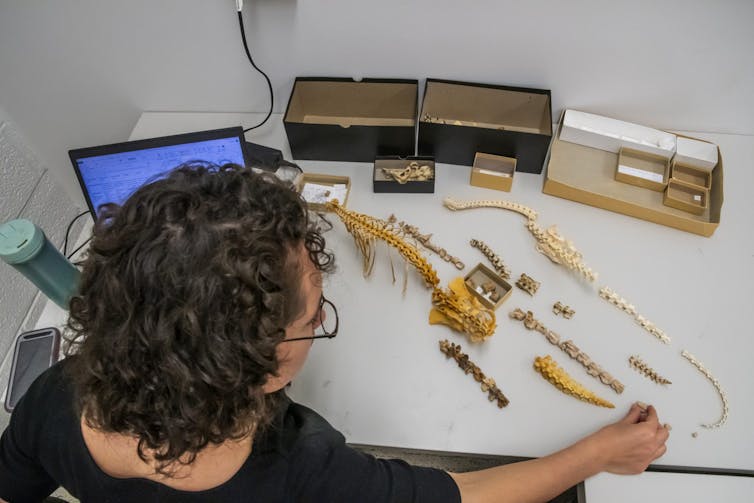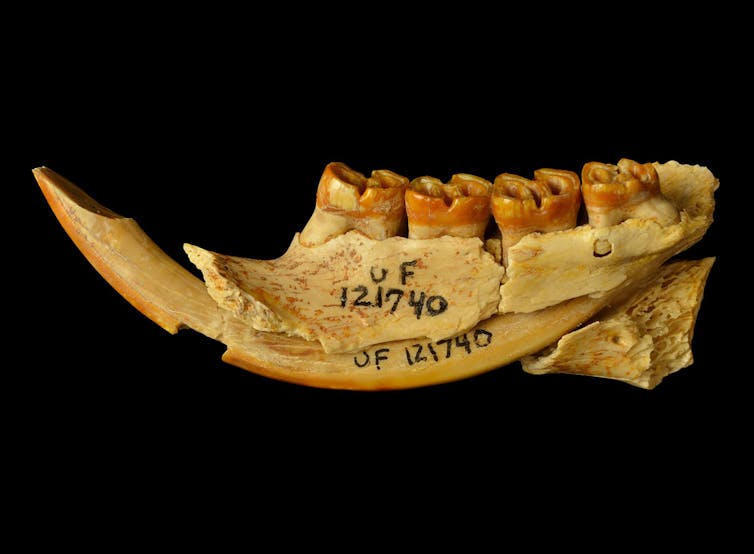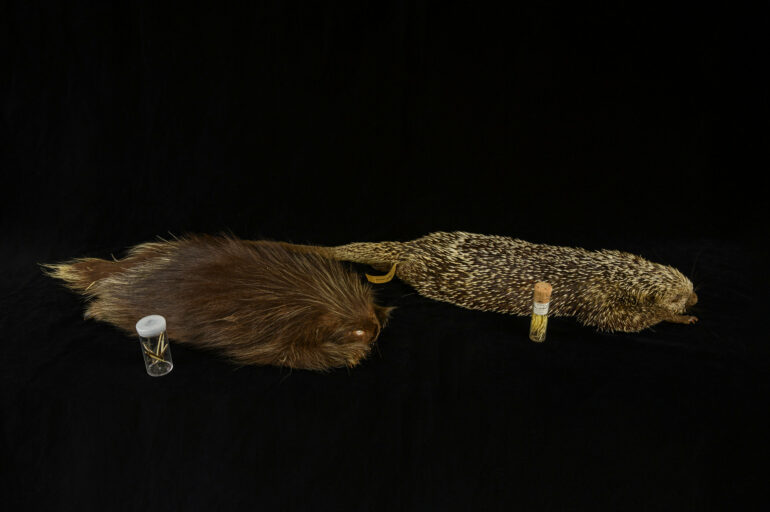A rare, nearly complete fossil of an extinct North American porcupine helped me and my colleagues solve a decades-long debate about how the modern North American porcupine evolved from its ancestors.
Published in Current Biology, our paper argues that North American porcupine ancestors may well date back 10 million years, but they wouldn’t be recognizable until about 8 million years later.
By comparing the bone structure of porcupines across North America and South America, we determined that for those 8 million years, North American porcupines unexpectedly still looked like their cousins, the Neotropical porcupines, which live across tropical Central America and South America today.
Our findings detail the North American porcupine’s evolutionary path from South America – and also solve the mystery of why it’s been so difficult to find its ancestors.
I’m a paleontologist who researches the fossilized bones and teeth of extinct animals. With museum curator Jon Bloch, I created a class where we analyzed bone structure to reach the conclusions of our study.

Natasha Vitek enlisted students to study minute details of the 2 million-year-old porcupine skeleton.
Jeff Gage/Florida Museum, CC BY-ND
Why it matters
The modern North American porcupine is distinctive among its spiky relatives. It has a short tail, a jaw that can scrape bark from trees and weighs between 10 and 25 pounds (4.5 and 11.3 kilograms).
While clearly related, Neotropical porcupines look different. They have long, grasping tails, weaker jaws and weigh between 1.5 and 10 pounds (0.68 and 4.5 kilograms).
DNA analyses of modern animals estimate that these two groups separated about 10 million years ago.
This is where the mystery comes in. Fossils of the North American porcupine are all younger than 1.8 million years old. In other words, roughly 8.2 million years’ worth of fossils of North American porcupine were missing.
All researchers had were bits of jaws and tails that looked like they belonged to Neotropical porcupines.

Porcupines in North America have strong jaws and can strip bark from trees.
Jeff Gage/Florida Museum, CC BY-ND
Two competing hypotheses could explain the similarity.
Some scientists argued that the jaw and tail fossils of early ancestors of North American porcupines should look more like their modern descendants. Researchers who backed this idea suggested that the fossil record was incomplete for some unexplained reason, but that it was still possible that fossils that supported their hypothesis may eventually turn up.
Other scientists suggested that all early ancestral porcupines might have had jaws and tails similar to today’s Neotropical porcupines. North American porcupine ancestors might be hidden in the existing fossil record because – based on jaws and tails alone – they look identical to Neotropical porcupine ancestors. Only younger fossils…



